- Analytics
- Market Sentiment
CFTC Report Covering Information until Nov.26, Released Dec.2
According to the Commodity Futures Trading Commission (CFTC) for data until the 26th of November, speculators hold the largest Net Short Position with the Japanese Yen and also maintain Net Short positions with Canadian dollar, the Australian dollar and now with the Euro too while they hold Net Long Positions with the British pound and the Swiss franc against the US dollar. The US dollar index still remains in neutral zone in the 81.45/80.44 flag trading pattern.
The EUR bias turn bearish as net position goes negative for the first time after July 2013, with an outstanding w/w change of $-1.6B reflecting ECB’s rate cut and comments on negative deposit rates. The CAD and AUD remain bearish and at the same time the Japanese Yen increased its net short substantially for one more week by $1.2B against the US dollar. The GBP Net position becomes positive following its exchange rate uptrend coupled with the Swiss franc increasing its Net Long slightly by $138M.
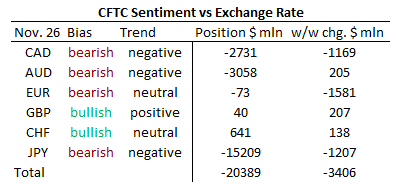
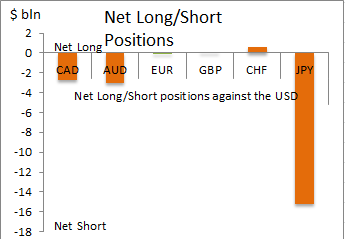
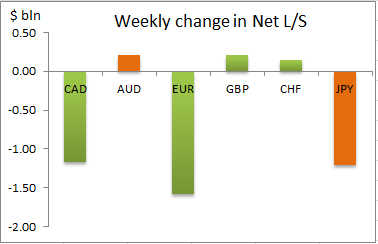
Net Short positioning on Canadian dollar increased with w/w change falling by $1.16B and the Net short reaching $-2.7B, the sentiment remains bearish.
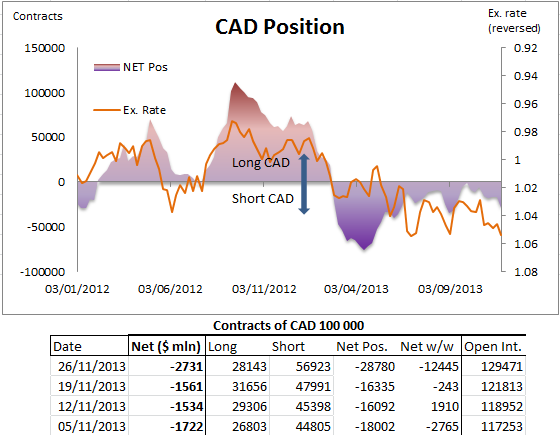
The Australian dollar Net Short positioning, despite the dovish comments by members of RBA, declined slightly by $20M against the US dollar to a standing Net Short of $3B.
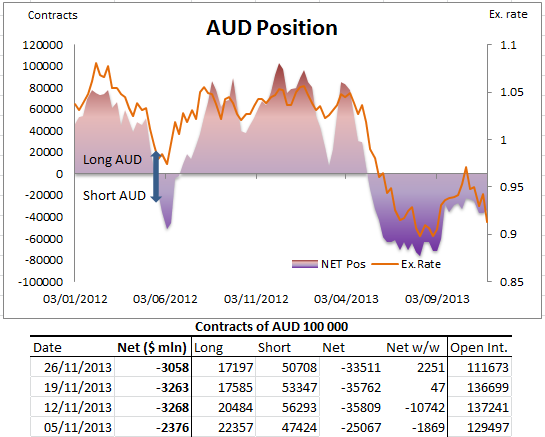
The greatest w/w change of net positioning has been on the Euro and has been to the short side. The previous overall long position eliminated as the w/w change was $-1.6B and the Euro speculative Net position is Short by $-73M. The Euro net positioning deteriorates for the fifth consecutive week, reflecting ECB rate cut and speculation of negative deposit rate. The bearish sentiment remains firm, the exchange rate trend is neutral though.
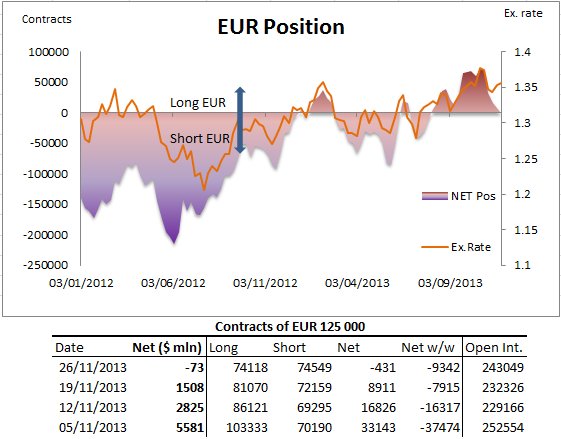
The British pound Net Short position on the other hand was disappeared for data until the 26th of November changing weekly by $207M and turning Net Long by $207M. Bullish bias prevails now in the GBP coupled with freshly made 2-year highs against the US dollar.
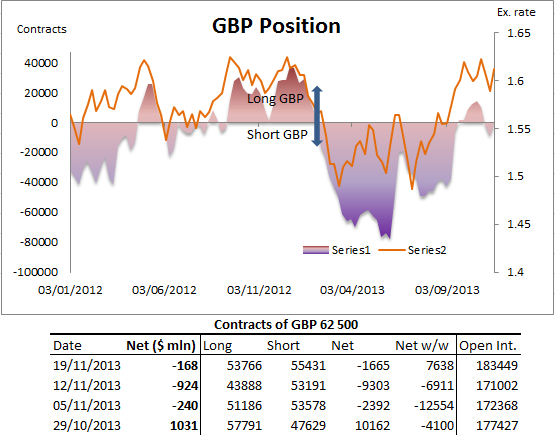
The Net Long position on the Swiss franc widened slightly this week by $138M to $641M, sentiment remains bullish but the exchange rate trend is now neutral.
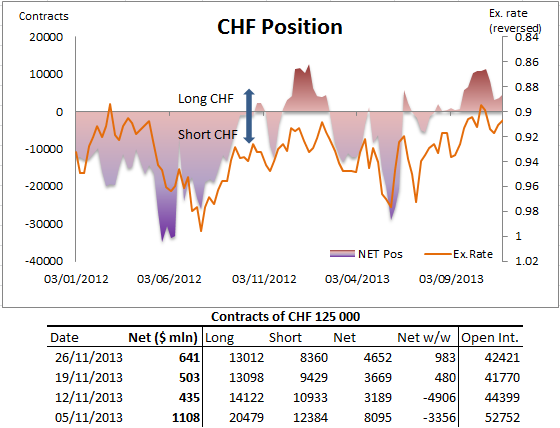
The Yen firmly keeps the leadership by holding the largest Net Short position against the US dollar and further widened its short side reaching by Nov.26 a record low at $-15.2B, w/w change was at $-1.2B the second largest decline after EUR. Bias on the Japanese Yen remains negative but at extreme levels, its trend is also negative against the US dollar
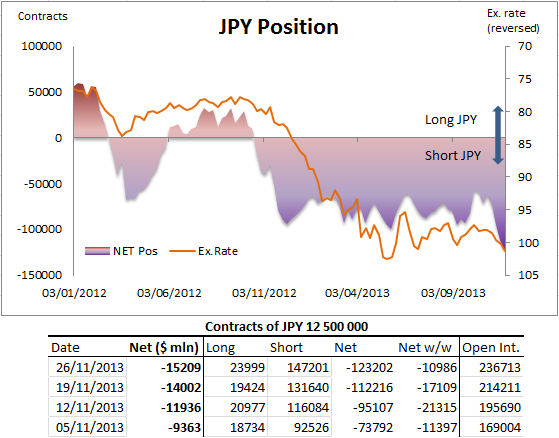
New Exclusive Analytical Tool
Any date range - from 1 day to 1 year
Any Trading Group - Forex, Stocks, Indices, etc.
Note:
This overview has an informative and tutorial character and is published for free. All the data, included in the overview, are received from public sources, recognized as more or less reliable. Moreover, there is no guarantee that the indicated information is full and precise. Overviews are not updated. The whole information in each overview, including opinion, indicators, charts and anything else, is provided only for familiarization purposes and is not financial advice or а recommendation. The whole text and its any part, as well as the charts cannot be considered as an offer to make a deal with any asset. IFC Markets and its employees under any circumstances are not liable for any action taken by someone else during or after reading the overview.
Last Sentiments
- 18Mar2021Weekly Top Gainers/Losers: Canadian dollar and Japanese yen
Over the past 7 days, prices for oil, non-ferrous metals and other mineral raw materials decreased but still remained high. As a result, the currencies of the commodity countries strengthened: the Canadian dollar, the Australian and New Zealand dollars, the Mexican peso, and the South African rand. The...
- 10Mar2021Weekly Top Gainers/Losers: Canadian dollar and New Zealand dollar
Оil quotes continued to rise over the past 7 days. Against this background, the currencies of oil-producing countries, such as the Russian ruble and the Canadian dollar, strengthened. The New Zealand dollar weakened after the announcement of negative economic indicators: ANZ Business Confidence and...
- 4Mar2021Weekly Top Gainers/Losers: American dollar and South African rand
Over the past 7 days, oil quotes continued to grow. Precious metals, including gold, fell in price. Against this background, the shares of oil companies increased, the Russian ruble strengthened, the Australian and New Zealand dollars, as well as the South African rand, weakened. The US dollar strengthened...


